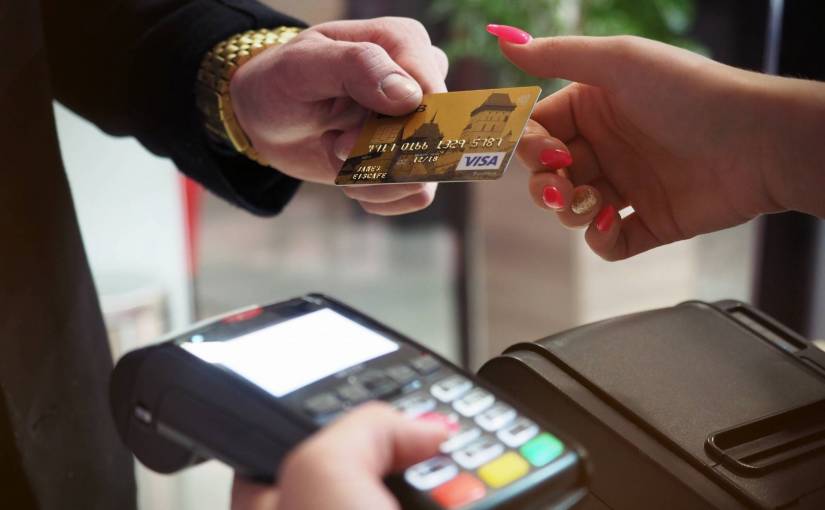Contactless payments and wearable gadgets have revolutionized the banking sector. Soon intelligent things will conduct trade on their own.
Many bankers may have first dismissed “IoT” as a fad. However, now the hype is becoming a reality. — likely because of staff shortages.
The New Business Models
As predicted by the Digital Banking Report, IoT growth is one of the top future banking forecasts. The “Thing Economy” will offer new business models, ecosystems, and possibilities for numerous sectors, including financial services, say Citibank experts.
IoT commerce is currently a reality — and is seeing unprecedented growth and is self-evident to most people. For now, the fusion of the real and digital worlds gives a tremendous potential to collaborate with partners on new enterprises and products.
Embedded Commerce to Payments – The Tip of The Spear
Many financial firms are aware of IoT’s potential for consumer banking. The bigger picture includes mobile applications and contactless payments. Alexa and the Apple Watch are in the retail competition.
Retail applications include Amazon Go Stores with “Just Walk Out” concepts, where payments are processed by AI and RFID tags straight to phones or watches. These are already teaching people to make semi-automatic payments through mobile devices.
But, says Jim Marous, co-publisher of The Financial Brand and CEO of the Digital Banking Report, these are simply the “low hanging fruit” of IoT. Embedded banking prospects will grow as financial organizations grasp the value of engagement over transactional banking, he predicts.
The Bigger Prize
While in-car payments are outstanding, the true promise of IoT is integrated finance. Wearables, speech devices, and in-car apps will soon be among the IoT alternatives. Others include using IoT for financial engagement such as cash transfers, content distribution, and combining healthcare information with financial gamification, adds Marous.
The Digital Vehicle Fingerprint
The next phase is to automate minor, frequent payments and transactions. Car IQ, a Citi Ventures portfolio firm, is already developing ways to enable automobiles to connect to banks and pay for services. Car IQ utilizes sensor data to create a “digital vehicle fingerprint” that may be used to authenticate and interact with banks.
The strongest prospects for banks and credit unions may be in commercial and B2B, where “smart labels” might be integrated throughout the supply chain.
Your Clothing with an Embed and Microprocessor Identifier
The labels include a microprocessor, an identifying module, an antenna, and a beacon. A new economy where corporations may embed financial services into items capable of conducting commerce directly with one other might be created through intelligent labels placed in goods.
“Financial institutions are well-positioned to lead and expand into the Thing Economy, which may drastically boost payment volumes,” says Citi.
The IoT Banking Onslaught Prepared
To benefit from the Thing Economy, financial institutions must overcome obstacles like poor management, the expense, finding talent to handle the detail — and of course — cybersecurity.
Overcoming these challenges may release $5.5 trillion to $12.6 trillion in global value for consumers and IoT users.
The verification and confidence necessary to make micropayments will require new infrastructure, including systems, technology, and partnerships, according to Citibank.
Know Your Customer
Once that infrastructure is in place, devices ranging from postage stamps to electric automobiles will be able to perform unattended, programmed transactions seamlessly end-to-end. Autonomous transactions need trust, security, and a device-specific digital identification system.
To verify users’ and devices’ identities, financial institutions will need to expand on current Know Your Customer (KYC) processes.
The actual danger is inaction. These KYM procedures will help comprehend and enforce permissions while verifying unplanned, autonomous machine interactions. The use of biometrics with IoT devices gives a greater KYC verification than traditional transactions. Yeah, more tracking.
A Chance, not a Threat — Say Bankers
Some analysts wonder whether IoT will replace conventional banks — Mercator Advisory Group disagrees. Some believe that conventional banks will be fine even if third parties promote new payment solutions.
Jim Marous argues acceptance and integration must begin at the top. For example, when considering change both leadership and procedure have to change — and with the conventional bank — both will be needed. Marous notes that financial institutions must likewise adapt to shifting consumer (and company) needs.
To be part of the future evolution, banks and credit unions will need to react swiftly or partner with reliable third-party IoT solution providers.
This IoT banking world is not rocket science and we can all see it coming — This IS the Internet of Things and it’s not a secret.
However, all change and fitting a banking business model into a system will take effort. In other words, if the conventional banking system wants to continue to function they will need to step up and go to bat for what they want.
People have wanted the banking system to change for years. Bankers’ hours are an outdated mode of business — but have you noticed how hard they are trying to force the digital world to fit into that antiquated system?
Convention banking is going to have to stop dreaming and start doing or they may lose themselves in the growing IoT world. Can’t make a deposit or get enough cash at midnight — but your bank can slurp your funds out at midnight with an Amazon purchase.
Your bank and credit union lose ground every day they hesitate to upgrade to the IoT world
Image Credit: Energepiccom; Pexels; Thank you!


















